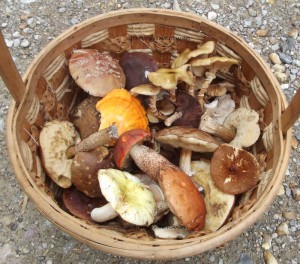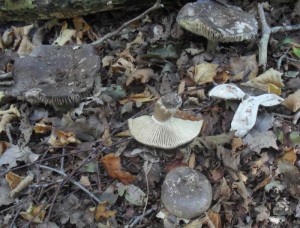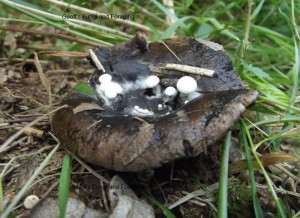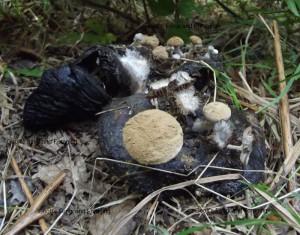07/09/2013
As anyone in rural areas of the north will not need to be told, yesterday autumn arrived in Britain, with a splash. The temperature dropped by about ten degrees in most places, and nearly everywhere had a very welcome downpour. We’ve just had the best summer since 2006, but it does now look as if it’s over. Hopefully (from my point of view anyway) there will be no repeats of the misplaced October heatwave we were subjected to in 2011.
It’s also perfect timing in terms of fungi. The first big flush of autumn species had just started poking their heads above ground in the last few days, and the change in the weather means they won’t get dried out and with a bit of luck they will start fruiting in abundance. Today was my first (advertised as) peak session with a group of foraging students, and it produced my first decent basketful of English wild mushrooms of 2013 (we are about 3 or 4 weeks behind northern Scotland down here on the south coast).
We found in excess of forty species altogether, and if I include a couple I found before the session officially started, the list of edible species found today is as follows:
Parasol mushroom (Macrolepiota procera), ruby bolete (Xerocomus rubellus), larch bolete (Suillus grevellei), bay bolete (Boletus badius), the blusher (Amanita rubescens), tawny grisette (Amanita fulva), brown birch bolete (Leccinum scabrum), blackening russula (Russula nigricans), rooting shank (Oudemansiella radicata), orange oak bolete (Leccinum aurantiacum), velvet russula (Russula violiepes), the miller (Clitopilus prunulus), blushing wood mushroom (Agaricus silvaticus), honey fungus (Armillaria mellea) and chicken of the woods (Laetiporus sulphureus).
Now is the time to book if you want to go mushrooming with an expert this autumn! 🙂
Geoff




